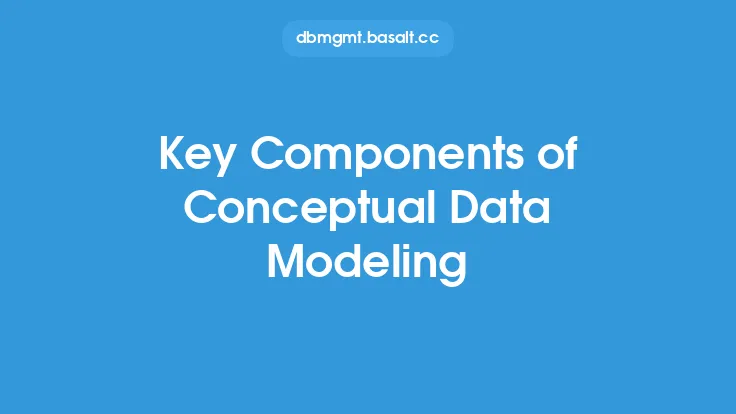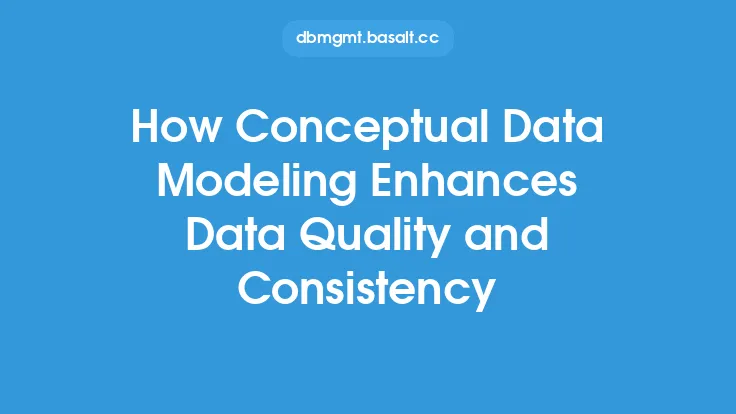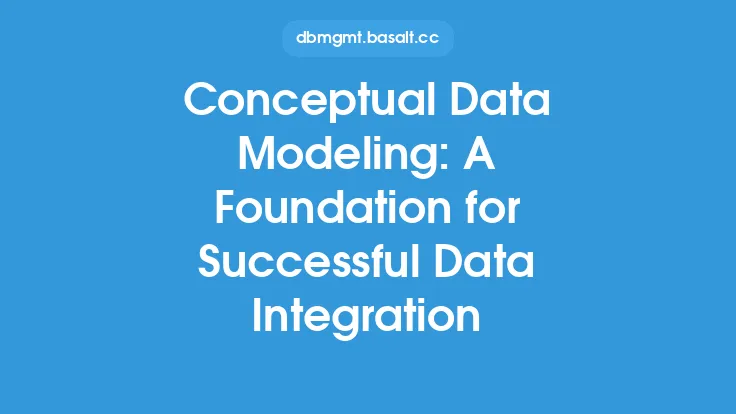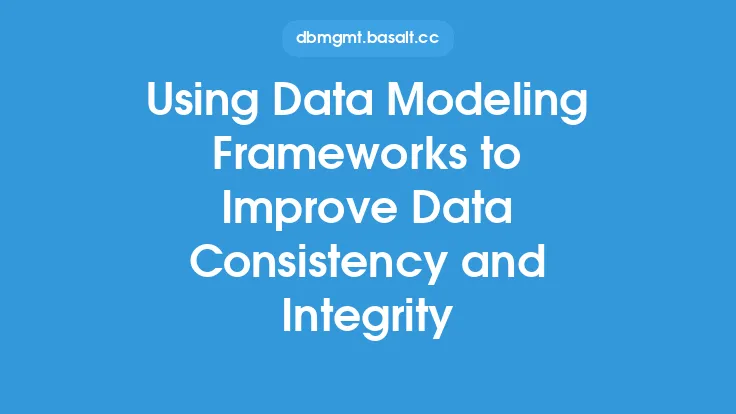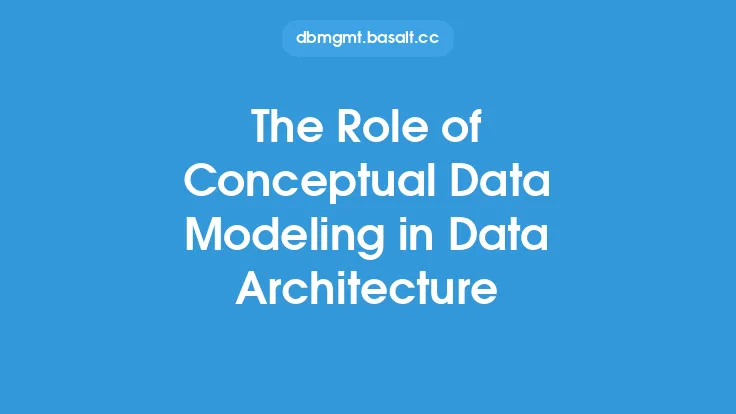Conceptual data modeling is a fundamental aspect of data modeling that involves creating a high-level, abstract representation of an organization's data assets. It is a crucial step in the data modeling process, as it helps to identify the key concepts, entities, and relationships that are relevant to the organization's business operations. The goal of conceptual data modeling is to create a model that is independent of any specific technology or implementation, and that can be used to communicate the organization's data requirements to stakeholders.
Introduction to Conceptual Data Modeling
Conceptual data modeling is often considered the first step in the data modeling process. It involves identifying the key concepts and entities that are relevant to the organization's business operations, and defining the relationships between them. The conceptual data model is typically created using a combination of techniques, including interviews with stakeholders, analysis of existing data sources, and review of business documents and processes. The resulting model is a high-level, abstract representation of the organization's data assets, and is often used as a starting point for further data modeling activities.
Key Characteristics of Conceptual Data Models
Conceptual data models have several key characteristics that distinguish them from other types of data models. These include:
- High-level abstraction: Conceptual data models are highly abstract, and focus on the key concepts and entities that are relevant to the organization's business operations.
- Technology independence: Conceptual data models are independent of any specific technology or implementation, and can be used to communicate the organization's data requirements to stakeholders.
- Business focus: Conceptual data models are focused on the business requirements of the organization, and are designed to capture the key concepts and entities that are relevant to the business.
- Simple and intuitive: Conceptual data models are designed to be simple and intuitive, and are often used to communicate complex data concepts to non-technical stakeholders.
Entities and Attributes in Conceptual Data Modeling
In conceptual data modeling, entities are the key concepts or objects that are relevant to the organization's business operations. Examples of entities might include customers, orders, products, and employees. Each entity has a set of attributes, which are the characteristics or properties of the entity. For example, a customer entity might have attributes such as name, address, and phone number. The entities and attributes in a conceptual data model are typically identified through a process of analysis and discovery, and are used to create a high-level, abstract representation of the organization's data assets.
Relationships in Conceptual Data Modeling
Relationships are a critical component of conceptual data modeling, as they define the connections between entities. There are several types of relationships that can exist between entities, including:
- One-to-one relationships: These occur when one entity is related to only one other entity. For example, a customer may have only one address.
- One-to-many relationships: These occur when one entity is related to multiple other entities. For example, a customer may have multiple orders.
- Many-to-many relationships: These occur when multiple entities are related to multiple other entities. For example, a product may be related to multiple orders, and an order may be related to multiple products.
Notations and Techniques for Conceptual Data Modeling
There are several notations and techniques that can be used for conceptual data modeling, including:
- Entity-relationship diagrams (ERDs): These are graphical representations of the entities and relationships in a conceptual data model.
- Object-role modeling (ORM): This is a technique that uses a graphical notation to represent the entities and relationships in a conceptual data model.
- Unified Modeling Language (UML): This is a standardized language that can be used to create conceptual data models, as well as other types of models.
Benefits of Conceptual Data Modeling
Conceptual data modeling has several benefits, including:
- Improved communication: Conceptual data models provide a common language and framework for communicating data requirements to stakeholders.
- Increased clarity: Conceptual data models help to clarify the key concepts and entities that are relevant to the organization's business operations.
- Better data integration: Conceptual data models provide a foundation for integrating data from multiple sources, and for creating a unified view of the organization's data assets.
- Improved data quality: Conceptual data models help to ensure that data is accurate, complete, and consistent, by providing a clear definition of the key concepts and entities that are relevant to the organization's business operations.
